Make It Do – Rationing of Canned Goods in World War II
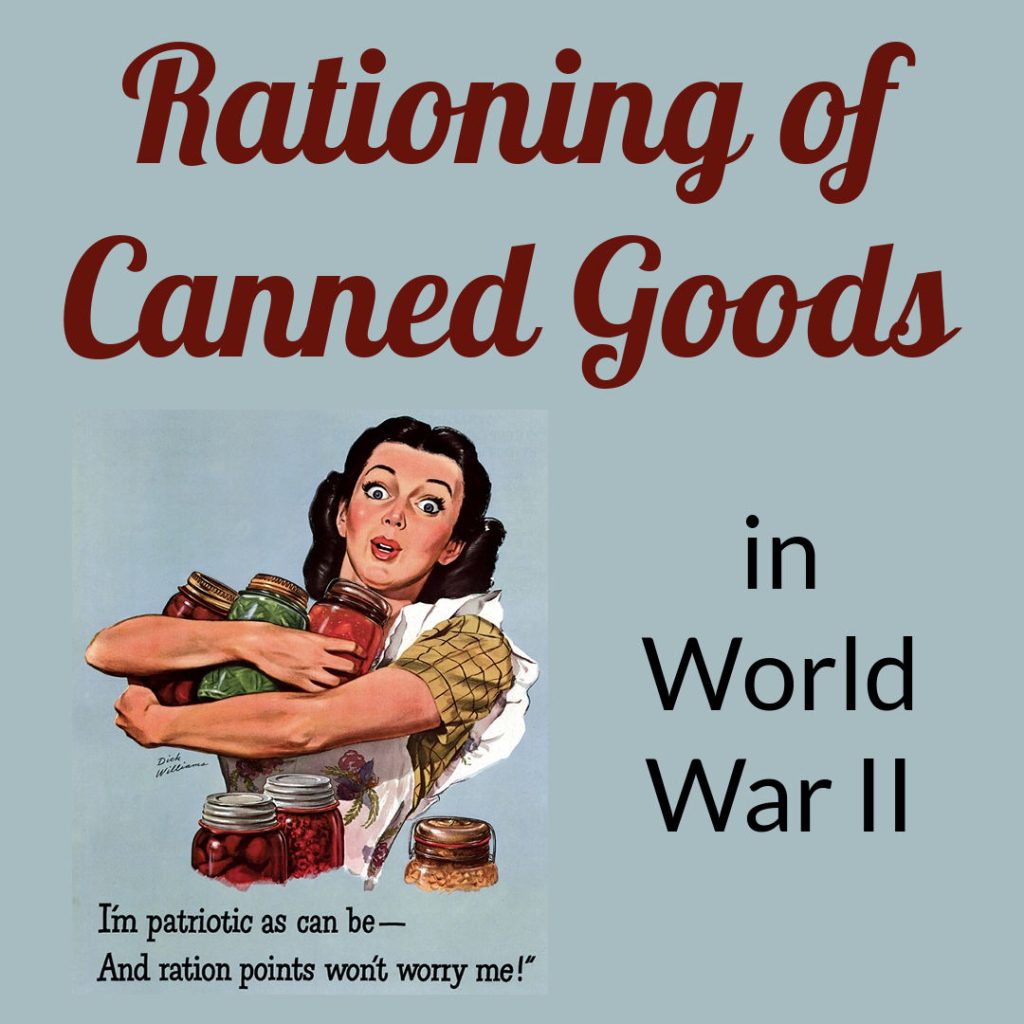
Rationing of processed foods was an important part of life on the US Home Front. A complex and constantly changing system kept the grocery shopper on her toes.
Why processed foods?
Tin was short.
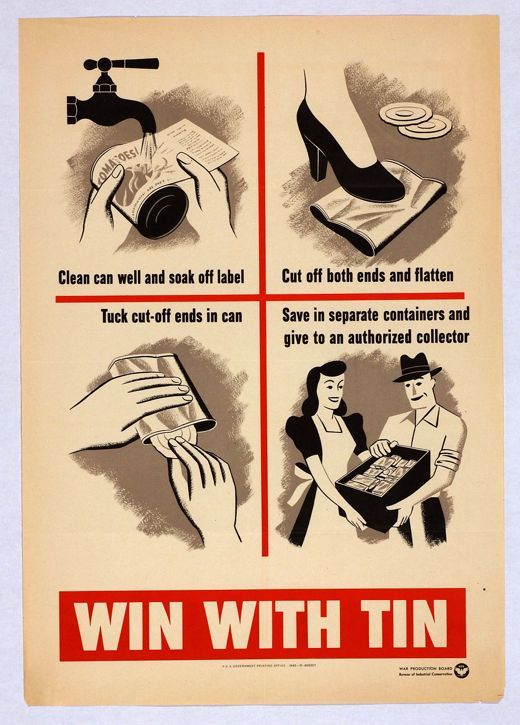
US poster with instructions for tin can collection, 1943
The Japanese controlled 70 percent of the world’s tin supply. Tin’s resistance to temperature, shock, and moisture made it an ideal packaging material. The US military used it for ration tins, ammunition boxes, plasma containers, and for morphine syrettes. The use of tin for civilian purposes had to be curtailed, which meant rationing of canned goods. (See Make It Do – Metal Shortages in World War II)
Food was in high demand.
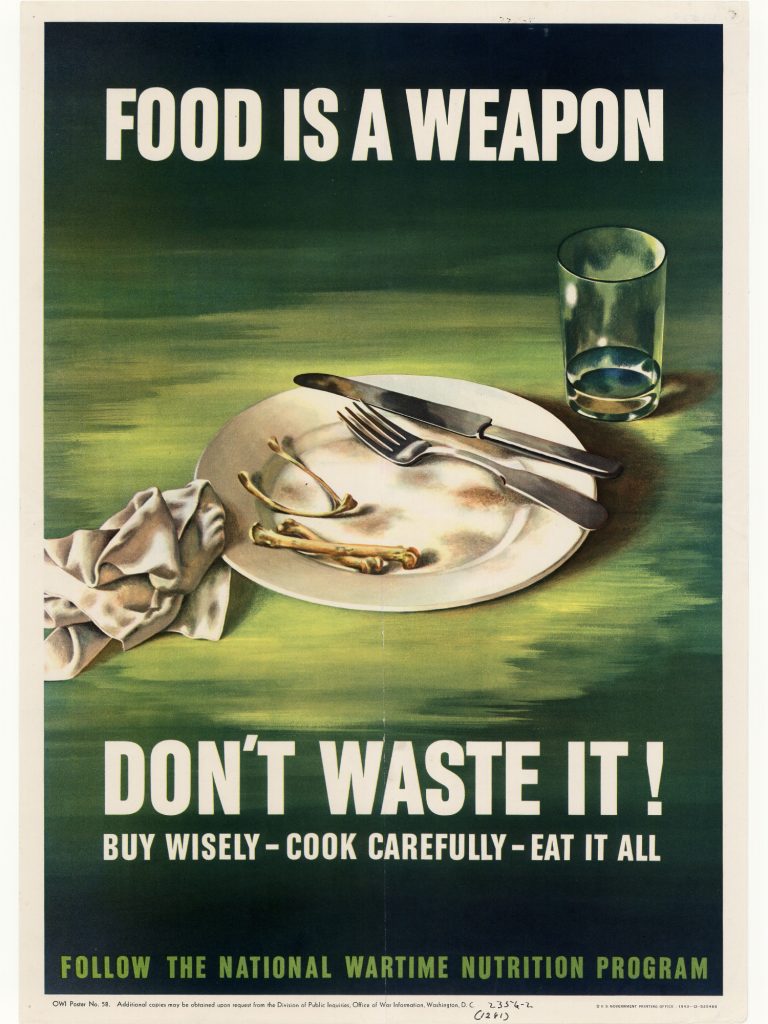
US Office of War Information poster, WWII
In addition to meeting civilian needs, US farms also fed the military and the Allies. However, an agricultural labor shortage due to the draft and the internment of Japanese-Americans strained the system. Reducing civilian usage of processed fruit and vegetable products through rationing helped reduce the strain.
Which processed foods were rationed?
Starting March 1, 1943, three hundred items were rationed, including canned or bottled or frozen fruits and vegetables, canned or bottled juices and soups, and dried fruits. Fresh fruits and vegetables were not rationed, nor were pickles, relishes, or Jell-O.
Points
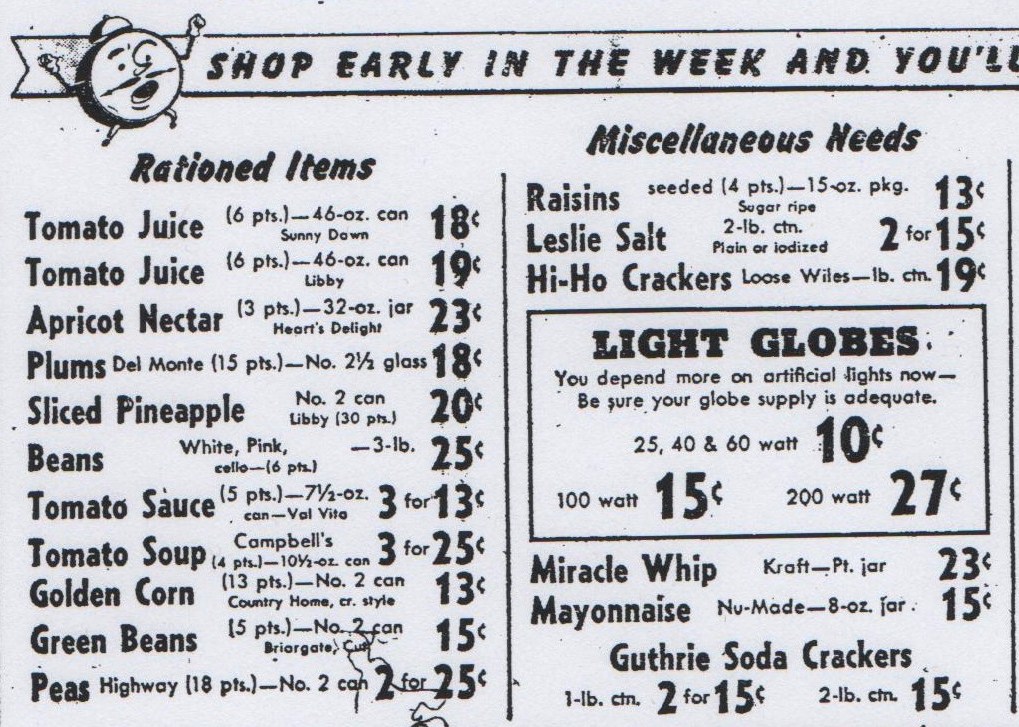
Safeway ad from the Antioch Ledger (Antioch, CA), 1943, showing ration points for each item
Each rationed item was assigned a point value, which varied over time due to supply, demand, and region. The job of the grocer became more complicated. Products had to be labeled not only with price but with point value. Each month, point values changed, and the grocer had to re-label.
War Ration Book Two
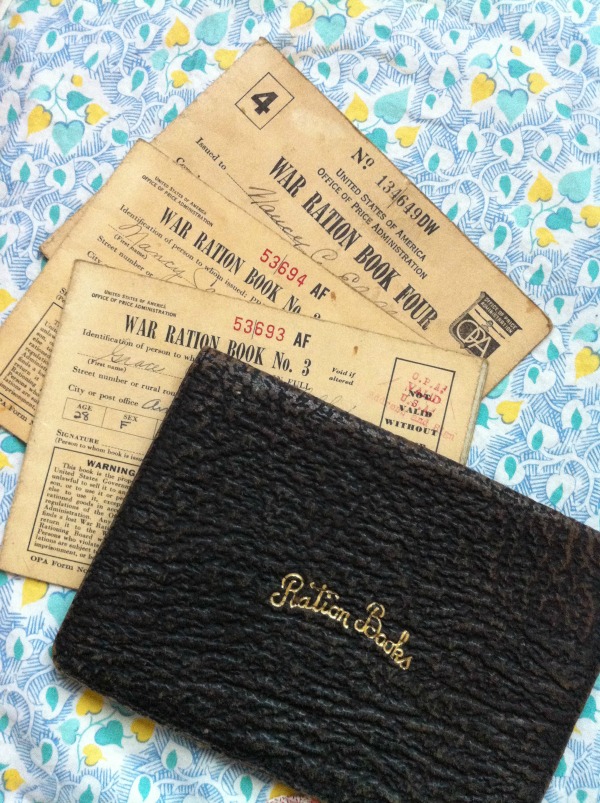
US rationing books owned by my mother and grandmother, WWII (Photo: Sarah Sundin)
On March 1, 1943, War Ration Book Two became active. The blue stamps provided 48 points worth of processed foods each month. This supplied 33 pounds of canned goods per person per year, which was 13 pounds less than prewar usage. Rationing calendars were published in the newspapers to help people keep track of which stamps were current. Stamps were good for eight, five, two, or one points each, with no “change” given, so the shopper had to be careful to use the exact number of points. To prevent fraud, the stamps had to be torn off in the presence of the grocer.
War Ration Books Three and Four
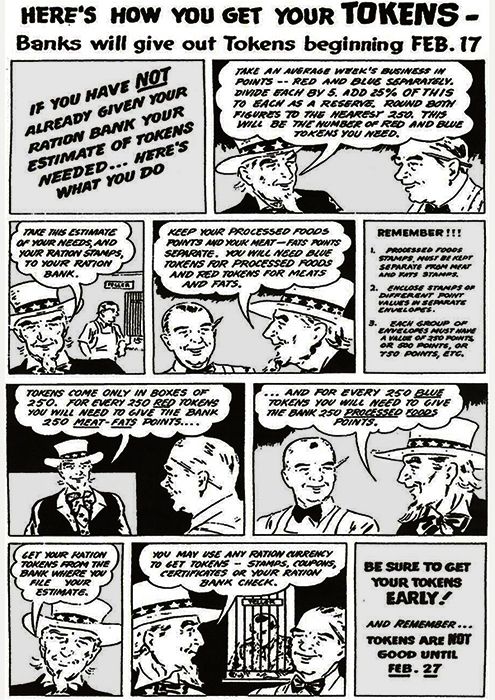
Cartoon giving information on new rationing tokens, February 1944 (US government publication)
Book Three became active in September 1943, but was replaced by Book Four on November 1, 1943. The system was simplified on February 27, 1944, when all stamps became worth ten points, and plastic tokens were issued as change.
Fluctuations
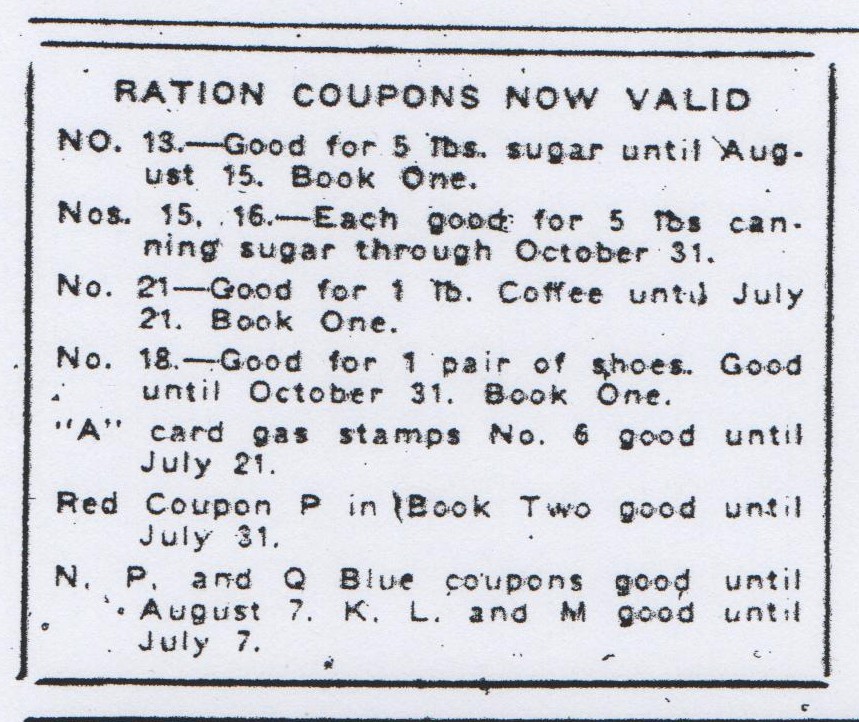
Ration coupon guide from the Antioch Ledger (Antioch, CA), 1 July 1943, showing which coupons were valid that week
Point values changed frequently, and items were often removed from or returned to rationing based on the harvest. On September 17, 1944 after a good harvest—and in preparation for the presidential election—all processed foods except canned fruit were removed from rationing, but were returned to rationing on January 1, 1945 due to the demands of the Battle of the Bulge. After V-J Day on August 15, 1945, processed foods were no longer rationed.
Victory Gardens
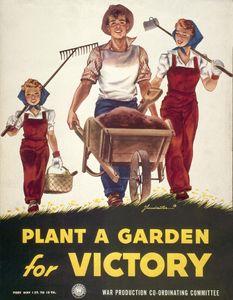
Victory Garden poster, US, WWII
People were encouraged to plant Victory Gardens to reduce the amount of processed foods needed. Newspapers and magazines published how-to articles, and gardens sprang up in backyards, vacant lots, big-city window-boxes, and even on community property. By the end of 1943, Victory Gardens supplied 40 percent of civilian needs for fruits and vegetables.
Canning
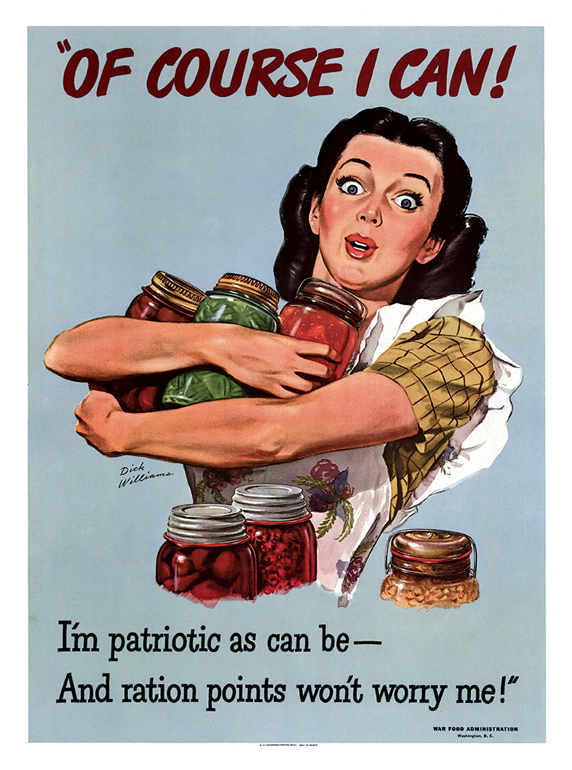
US poster encouraging canning, WWII
To put up this bounty, home canning was encouraged. A poll in January 1944 found that 75 percent of housewives canned, and those women canned an average of 165 jars per year. This met the family’s needs and preserved ration points for foods they couldn’t grow. Extra canned fruits and vegetables were often donated to the needy.

